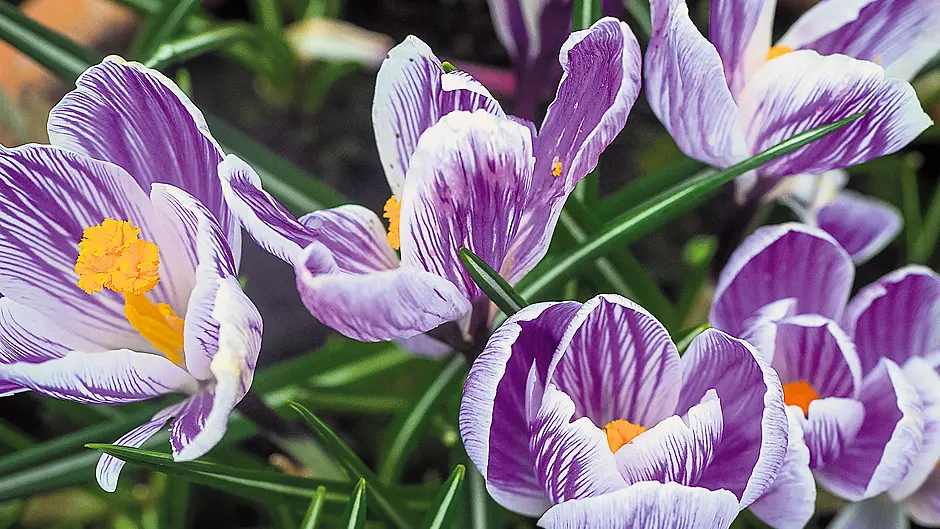THINGS are picking up nicely outdoors and there is a sense that spring is almost here. There’s an urge to start sowing, but it’s often worth delaying a couple of weeks and waiting until temperatures are more stable.
If you have a large propagation unit then this is a good time to set it up in your greenhouse or polytunnel. Give it a once-over to make sure heating elements and thermostats are safe and working as they should and wipe surfaces to remove any dirt that might contain disease spores. You may not start to fill the unit just yet, but all will be clean and ready to go when you decide the moment is right to start sowing.
Smaller propagators need to be clean too but this is an easy job to do when you want to use them. They work well in conservatories, kitchens etc provided there is plenty of light. It can be hard to maintain even temperatures, at this time of year, with a small propagator in an unheated greenhouse.
Late February is a good time to sow tomatoes. These early plants should start cropping in late June/early July and, if they are kept disease-free, they can continue cropping into late autumn or early winter. Sow a few seeds of each variety into 8cm pots of good compost and label them clearly. Cover seed with a scatter of compost and water lightly. Use a propagator to keep a steady 18-20C until seedlings emerge. You will prick them out into individual pots when they are big enough to handle.
Variety is all-important when growing tomatoes. Raising your own plants from seed widens the range of variety options. Choose ones that have done well in previous years or ones that you know have been a success for nearby gardeners. Cherry varieties tend to be the most prolific and earliest croppers. Beefsteak tomatoes are delicious, but they need a good summer to do well and they tend to crop later than smaller varieties.
Don’t worry if growing from seed seems too big a commitment – there will be lots of small plants available to buy in late March or April. ‘Moneymaker’, ‘Gardener’s Delight’ and ‘Shirley’ are often available as plants.
Finally, right now it’s clear that my bulb buying often comes down to random acts of inspiration when I spot packs available in the autumn.
I should be more organised I suppose, but it is rather lovely to see all the fresh flowers emerging now and be reminded I planted!
Down to business with broccoli
This is a good time to get out and check broccoli plants over – a bit of care now can help plants crop better.
Over-wintered sprouting broccoli plants are remarkably hardy. They will stand through frost and snow with little sign of damage. Plants occupy a bed for many months, but they are about to come into their own and start producing lots of lovely broccoli shoots.
- Check stakes and ties. Knock in new stakes or push the ones already there down further – they should be firm when you try to move them. Jute string can rot after a few months outdoors so replace it rather than waiting until it snaps and plants blow over.
- Check for mould on leaves and cut out any severely affected ones. You can trim leaves if just one patch is affected. If the heart of the plant has rotted, then cut this out as best you can and rely on spears being produced at leaf/stem joints. Mould should be less of a problem as the year progresses but you want to get rid of the source of any spores if you can.
- Remove lower leaves that are yellow or blotchy. Some of these fall of their own accord, in which case you can clear them from the ground. If they haven’t fallen then they may pull away or you can cut more tenacious ones. Removing lower leaves that no longer aid the plant, will allow air to circulate and reduce the risk of moulds proliferating.
- It is worth using a liquid feed if soil is poor. This will act fast to give plants a boost for spring shoot production. A layer of seaweed or manure round the base of each plant can also work wonders. Don’t use granular or long acting fertilisers – the nutrients in these won’t get taken up in time to be effective.
A few important jobs to get on with this week ….
- Finish pruning fruit trees this month and before buds start to open.
- Pick last Brussels sprouts and clear plants so beds are ready for new spring planting. Sprout stems can be chopped into smaller sections before adding to the compost heap.
- Put a layer of manure on the rhubarb bed – stalks are already growing and a bit of nitrogen-rich feed is always useful.







